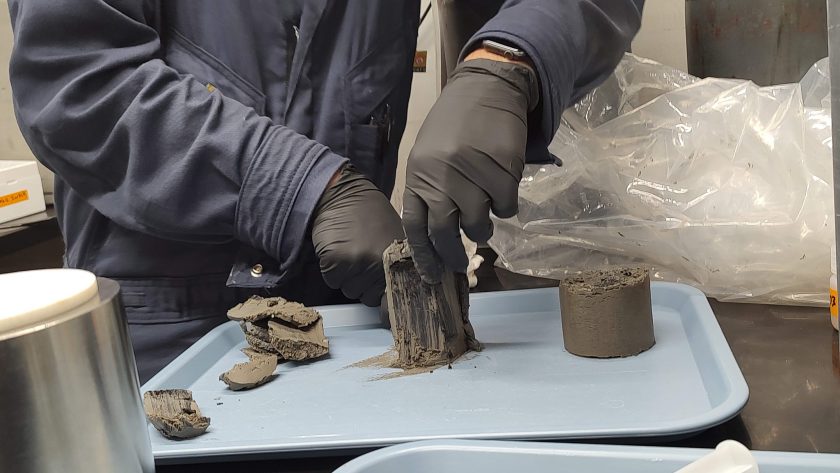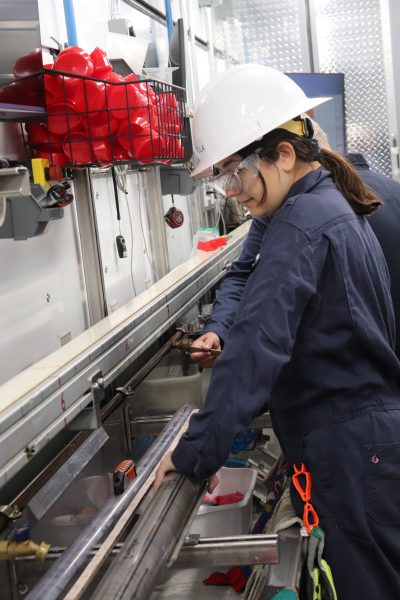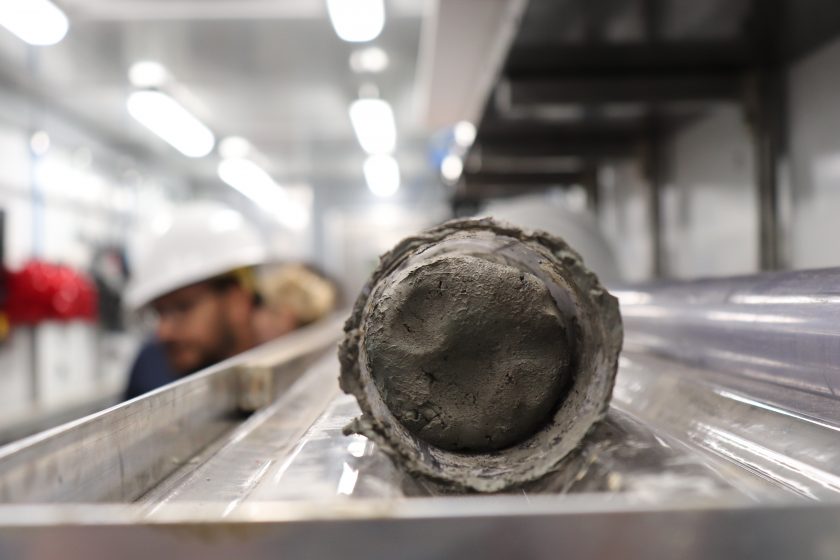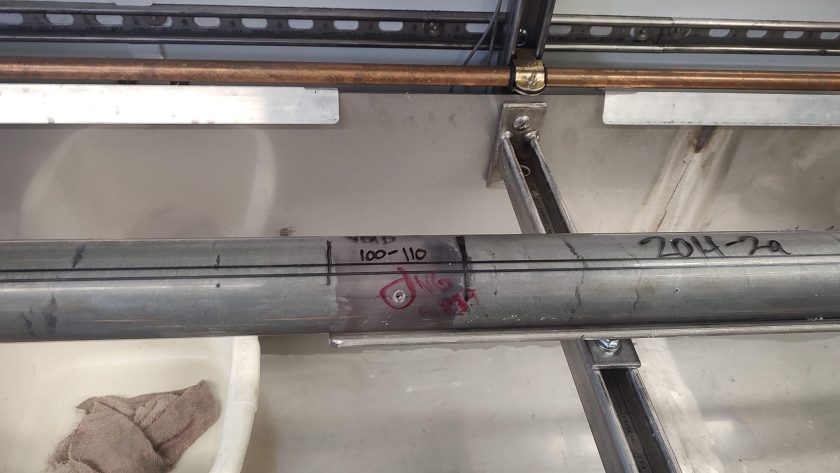Cutting Core, Seeing Signposts
August 10, 2023

Editors Note: Scientists from the UT Jackson School of Geosciences and partner universities are in the Gulf of Mexico on a mission funded by the Department of Energy to sample and study methane hydrate, a difficult to reach and poorly understood substance with potentially wide-ranging effects on the planet’s environment, climate and energy resources. Led by Jackson School Professor Peter Flemings, the scientific team includes researchers from the U.S. Geological Survey, Ohio State University, the University of Washington, Oregon State University, the University of New Hampshire, the Colorado School of Mines and Tufts University. Jackson School Science Writer Monica Kortsha and videographer Drew Ott joined the team to document the work and tell the story. Follow the expedition here.
By Monica Kortsha
Earlier this week, I watched a core sample slide into the processing lab for the first time, the drill crew pushing it through a hole cut into the side of the shipping container that houses the lab.
Surrounded by a clear plastic tube, the core offered a first look at sediment about 200 feet below the seafloor. The core was made up of gray clay interspersed with random cracks and gaps. These gaps didn’t exist under the seafloor, but were formed as methane gas rapidly exited the sediments on the core’s journey from the depths to the drilling deck floor.

The scientists didn’t see any signs of methane hydrate in this samples – nor were they expecting to at this point in the subsurface. Although the temperatures are low enough and the pressures are high enough for hydrate to form, there’s likely not a high enough concentration of the gas present, nor space for the hydrate to form among the tightly packed clay particles.
But even without hydrates, there’s still plenty to sample in this core and others.
As I covered in my previous post, the scientists are trying to understand the entire methane hydrate reservoir system from top to bottom. The top layer – from the surface of the seafloor to about 600 feet down – is particularly important to sample because it contains an important transition point: a chemical environment dominated by sulfate salt found in the ocean to one dominated by methane gas found deeper in the subsurface.
Studying this transition can help scientists understand how methane here and in other reservoirs around the world flows through the subsurface environment, and the different factors – from microbes to geology – that influence how much of the gas can leave and the broader effects it can have on ocean chemistry and the climate.
In the core processing lab, the scientists made quick work of collecting fleeting samples from the core. It started with a full thermal scan that shows the location of methane pockets. That was followed by scientists puncturing the core’s plastic lining with drills and using syringes to collect gas samples at various gaps along the core length, where gas will readily accumulate. Then, the core was subdivided into smaller portions, which scientists carried off to their respective labs.
Right now, the main focus is on preserving samples for later study. That means making sure that methane doesn’t escape, chemicals are kept in the same form they’re found at in their natural subsurface environment, and deep-sea microbes don’t mingle with their cousins at the surface.

It will take further analysis to scientifically trace the chemical transition that influences where methane starts to reign. But signs of it can be seen with the naked eye alone.
I saw a dramatic example for myself when I watched lead geochemist Evan Solomon, an associate professor at the University of Washington, slice the edges off a core sample as part of the pore water collection process. The core went from looking like a block of gray clay to a slice of chocolate cake, with Solomon’s slices revealing a hidden interior full of dark striations formed by the mineral iron sulfide. This mineral is often produced by communities of deep-sea microbes that subsist on methane and sulfate, and mark a transition point where the influence of ocean chemistry starts to wane and methane levels start to increase.
The striations most likely mark a past transition point because it takes some time for the mineral to form in quantities large enough to see, and the zone is thought to change place over time depending on the particulars in the ocean and subsurface environment.
It’s an exciting signpost from the past, one that could help place the modern data that scientists are collecting from pore water and gas samples into better context.
This is the third post in the series. Read the second post here.

